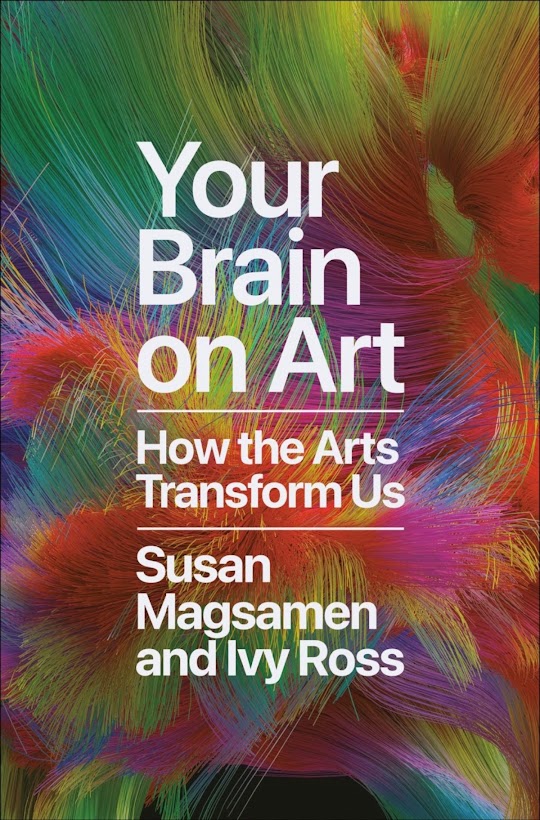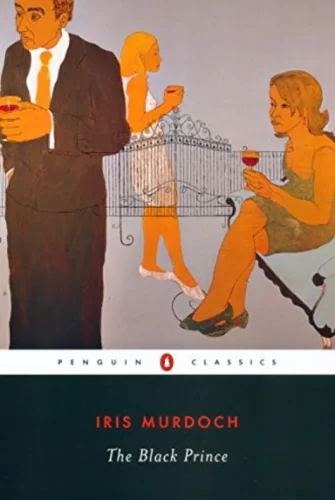Your Mind on Art (2023) presents extraordinary observations into how creative pursuits and aesthetics – from melodies and rhythms to sketching and indoor styling – can reconfigure our brains and enhance our lifestyles.
- Introduction: Discover the myriad ways you can experience a better life through art and design
- Our receptivity to aesthetics
- Tackling tension, unease, and distress
- Addressing discomfort and fostering physical well-being
- Developing with art
- Executive Summary
- About the author
- Book Review
Introduction: Discover the myriad ways you can experience a better life through art and design
There’s a high likelihood that you are somewhat acquainted with the realm of art healing. You could visualize in your thoughts distressed youths being urged to communicate their emotions through illustrations and artwork. However, the verified methods and therapeutic merits of art extend far beyond this.

Amidst a wealth of data from medical experiments and peer-reviewed analyses, you will encounter a variety of methods aimed at enhancing your general mental well-being and health. Every instant of everyday life, your senses – together with your mind – are absorbing and interpreting the world around you. And within this abstraction, you’ll find out how the routine employment of art has the capability to reorganize your brain and enrich every facet of your life.
Our receptivity to aesthetics
Before delving into the diverse therapeutic advantages that art can deliver, we must pose two critical inquiries. The primary one being, What constitutes art? And the secondary one is, How do we interpret art on a biological stratum?
While individuals have been debating the framework of art for generations, for the aims of our discussion, we intend to encompass a broad spectrum. In reality, we are going to take inspiration from the Irish poet John O’Donohue who articulated, “Art is the core of consciousness.”
This may seem a tad enigmatic, but in some regard, it’s quite uncomplicated too. Art is omnipresent. It’s in the outline of your carpet, the form of your potted flora, and the configuration of your furnishings.
Magsamen and Ross have crafted a phrase for this consciousness; it’s termed possessing an aesthetic approach. If you by now boast a strong aesthetic approach, you might be the sort of person who frequents art museums, is often stirred by melodies, and is observant of a chamber’s interior scheming.
Nevertheless, whether you’re cognizant of it or not, you’re incessantly being influenced by aesthetics. The hue of the walls, the illumination, and the sound aura of your current sitting space are all affecting you. Possessing an aesthetic approach merely signifies that you have an understanding of this interrelation and are prepared to capitalize on it.
This brings us to the subsequent issue of the physiological impact art has on us. As human beings, we are continuously interpreting our setting through our senses. What we glimpse, what we listen to, what we smell, the temperature and composition of the items we touch – these are the aesthetics of our backdrop, and they are being absorbed and analyzed on a moment-by-moment basis.
All of this holds the potential to alter your emotional state. Fragrances, sounds, and colors can cause a surge or dip in your blood pressure. They can spur the discharge of stress hormones. Or they can induce a sensation of tranquility, safety, and sleepiness.
A large portion of this transpires on a subconscious tier. Neuroscience informs us that merely 5% of your cognitive processes are conscious. The remainder is transpiring without your deliberate consideration. Your senses are being processed and your emotions are manifesting subconsciously. Yet by heightening your awareness – or your aesthetic mindset – you can consider all of this and embark on using art to institute enduring adjustments to your life and welfare.
Tackling tension, unease, and distress
There’s a likelihood you might harbor a mixed sentiment toward art. Maybe someone relayed to you during your formative years that you lacked an innate flair for art, and ever since then, you simply held the belief that art was designated for others.
If there is merely one element you accumulate from this synopsis, let it be the comprehension that you are not required to be an artistic virtuoso to yield the benefits of art. Forming something with your hands, whether it’s a pencil-and-paper illustration or a miniature clay figure, is its own fulfillment. A research endeavor at Drexel University discovered that individuals can diminish their cortisol stress hormone levels by devoting a mere 45 minutes to art creation. The study additionally remarked that their proficiency or prowess in art was of no consequence. Crafting art is pacifying on a physiological level.
However, that’s merely the starting point. There have been numerous investigations in the past few decades linking to art therapy. The findings signify that creating art in a judgment-free backdrop can also bolster your immune responses, your vascular responsiveness, and your psychological well-being.
In reality, you are not mandated to create art to derive certain benefits from it. A 2020 probe at University College London disclosed that those who attend cultural functions at least once annually were discerned to have lower psychological anguish and an enhanced standard of living – irrespective of their financial tier.
Even though there is a belief that humans can undergo over 30,000 distinct sensations, we further possess the tendency to become emotionally locked in certain particular emotional lanes. This can be incapacitating, particularly if the emotions trigger unease, stress, or despondency. Art has the exclusive capability of altering how we feel as our sensory acceptance is part of a complicated, interconnected neural circuit.
Recall the last instance you abruptly heard a melody that had escaped you since your high school days. Simply a few seconds of that melody can evoke a range of emotions. It can haul you back to a very precise time and place.
Aromas and savors likewise hold a robust influence. A particular fragrance or the taste of a specific dish can provoke a seemingly ignored childhood memory in vibrant detail. In this approach, sound therapy is sometimes integrated with dialogue therapy due to its established advantages in moderating stress.
This is an invaluable potency. When you have lingered so long in an emotional rut that you are undergoing burnout, an image, a sound, an aroma, can facilitate you snapping out of it and encountering a brief spell of transcendent tranquility.
In numerous circumstances, art possesses the extraordinary capacity to reroute your thoughts elsewhere. One method has been so efficacious it goes back to ancient civilizations. For Tibetans, the mandala represents a circular composition housing colorful, hallowed geometrics within that is utilized to complement meditative routines. In the twentieth century, Carl Jung discovered that as individuals filled in the geometrics within the mandala, it aided them in navigating their intricate emotional existences and arriving at the unifying focal point.
Recent examinations have stood firm on the positioJung’s notions. An investigation disclosed in the Art Therapy periodical exhibited notably diminished levels of unease in individuals who engaged with mandalas, contrasted with those who executed uninhibited sketching on a vacant piece of paper. The analysts opined that the mandala necessitated just enough concentration and intricacy to pacify and redirect a patient’s thoughts away from worrisome ruminations. This “switching-off” influence that art can offer has proved to be invaluable in terms of enhancing mental well-being.
The formation of art has been associated with the generation of serotonin and endorphins, which are linked to a more joyful, more emotionally unbarred frame of mind. This unbarred attitude is crucial when addressing post-traumatic stress disorder as PTSD essentially represents an enduring condition wherein a traumatic incident is imprisoned in our body and mind. It could be a distressing, violent experience, or a painful rift with a companion. Either way, you haven’t been capable of dealing with the instinctual emotional reaction. It’s become stagnant and, under appropriate conditions, it can resurface once more and incite your stress hormones and nervous system into overactivity.
Thankfully, there has been an abundance of investigation in recent times exploring how an array of art techniques can aid in mitigating PTSD and harmful stress. Drama therapy, dance therapy, painting, sculpting — all of these are methods that can empower an individual to scrutinize and articulate their inner sentiments — which is a crucial phase in mitigating PTSD. For instance, drama therapy permits the individual an opportunity to step out of themselves and to boost their own capacity for empathy by portraying other individuals. And one peer-reviewed study displayed that programs involving drawing yielded an over 80 percent decline in PTSD symptoms.
In the subsequent section, we will shift away from stress and anxiety and delve deeper into other physically therapeutic benefits that art can bestow.
Addressing discomfort and fostering physical well-being
We have already discussed some of the occurrences within your body during sensory encounters, but it’s vital to acknowledge that this progression is not merely psychological — it’s physical as well. The configuration and operations of your cells are also altered — rendering your reaction to art both physiological and biological.
Consider neuroplasticity, for example. This is the capability your brain possesses to reconfigure neural networks and modify its functioning. This evolution doesn’t occur overnight, naturally, but it does occur when you alter your surroundings or adopt new routines, such as integrating a new art regimen into your daily schedule. This aids in elucidating why an increasing number of individuals are being provided with a prescription for art, both as a therapeutic intervention and as a preventive measure.
Several medical institutions are catching on to the advantages of the aesthetic attitude as well. While crafting rehabilitation environments, many hospitals take into account the color of paint and other internal design elements. Aromatherapy is being utilized to aid in alleviating nausea, and video games are now a prevalent tool in the treatment of patients in recovery from a stroke. By and large, it’s not unusual to witness art practitioners collaborating with clinical personnel in devising patient care schemes at hospitals.
There’s even a term now — palliative aesthetics — which focuses on pain management approaches that consider art and aesthetics. BJ Miller is an internal medicine specialist who suffered the loss of both his legs and one arm in a dreadful accident numerous years ago. He comprehends that chronic pain can also be accompanied by an array of other symptoms, including fatigue, nausea, despondency, and insomnia. Miller has discovered art and aesthetics, encompassing music therapy, to be invaluable assets in ameliorating mood and handling all of these symptoms over the long haul.
He advises his patients to cultivate an aesthetic attitude by being perceptive of the moments during the day when they’re feeling better and endeavor to inquire, What’s making the disparity? What’s the environment like? Is there a sound, a scent, a texture, a hue? Capture an image with your phone so you won’t forget.
Music and dance therapy are also being employed to treat individuals with Parkinson’s disease, a neurodegenerative ailment that leads to physical complications including tremors, unsteadiness, and diminished coordination. Only recently has science advanced closer to comprehending the impact that dance has on the human brain. A three-year exploration published in 2021 revealed that dance not only bolstered the mood and quality of life in individuals with Parkinson’s but it heightened the blood flow to the basal ganglia, the region of the brain responsible for coordination and smooth muscle regulation. Consequently, dance therapy lessened the symptoms of the disease and enriched various motor control functions like ambulation and facial expressions.
In the concluding section, we will culminate by swiftly examining some of the broader benefits of art that everyone can derive advantages from.
Developing with art
The author Kurt Vonnegut Jr. once relayed to a group of secondary school students the secret to a successful life. It had nothing to do with ambition or resolve. He urged them to engage in art, any form of art. Poetry, music, painting, sculpting, it didn’t matter. It’s not about renown or wealth. It’s about creating something that will aid you in understanding yourself and “nurture your soul.”
Many of us were raised in an educational system that prioritized rote learning and standardized evaluation. However, an increasing number of researchers are realizing that playful artistic experimentation can yield healthier, more flourishing minds.
Taking all of this into account, Magsamen and Ross have pinpointed numerous ways in which art and the aesthetic approach can foster a flourishing existence. These encompass nurturing curiosity, constructing enriched environments, and harmonizing ritualized practice with regular instants of fresh and unexpected experiences.
As psychologist Todd Kashdan articulated, a meaningful and fulfilling life involves choosing to be curious and probing the unfamiliar rather than evading it. Engaging with art, with curiosity and minus judgment, is an ideal mode of deepening your empathy, as well as learning to be at ease with ambiguity and uncertainty, which are inevitable facets of life that can induce unease in some of us.
Consequently, let’s endeavor to encapsulate this in a narrative akin to a day in the artful life.
Upon arising, you proceed to the kitchen illuminated by blue-white bulbs mimicking sunlight and triggering your circadian rhythms. You pause to relish the tastes and scents of your preferred coffee or tea. You maintain a daily art routine that’s as significant as your everyday physical activity and meditative practices. You engage in the art devoid of expectations or criticism, it’s about connecting with yourself and nurturing your own welfare. It could be half an hour of sketching or, during weekends, several hours dedicated to a sculpture.
Following that, you allocate time to immerse yourself in nature and revel in the sights, sounds, scents, and rhythms of the natural realm. You appreciate the intricate formations and marvel that nature offers and transfer its inspiration with you to the workplace. You also transport the virtues of communication, collaboration, and creative troubleshooting into the workplace and prioritize these over mere efficiency and productivity.
Post work, you seek out communal artistic encounters with your comrades, such as live music or a dramatic performance. You cherish your social circle, the exchange of ideas, and the capacity to cultivate empathy and fresh viewpoints in your worldview.
Doesn’t that sound like a genuinely fulfilling day? Naturally, eachday cannot possibly be this impeccable, but it has the potential to become your aspiration. Strive towards crafting a pleasing ambiance that nurtures your welfare and aids in your continuous education, development, and pursuit of a thriving existence.
Executive Summary
By fostering an aesthetic perspective, you can enjoy the numerous advantages that art provides. Embracing an aesthetic outlook acknowledges your ongoing interaction with the surroundings and the processing of sensory encounters. Numerous studies demonstrate that art – be it in the form of sound, colors, drawing, painting, dancing, or sculpting – can alleviate stress, anxiety, pain, and trauma, while also extending life expectancy and enhancing your overall well-being. By establishing a more aesthetic environment and infusing more art into your daily routine, you can lead a healthier, more satisfying life.
About the author
Susan Magsamen is the initiator and head of the International Arts + Mind Lab, Center for Applied Neuroaesthetics at Johns Hopkins University School of Medicine, where she serves as a faculty member. She also serves as the co-director of the NeuroArts Blueprint. Susan collaborates with both public and private entities, employing evidence-based artistic and cultural practices in various domains such as healthcare, child development, education, workforce innovation, rehabilitation, and social equality.
Ivy Ross is the Vice President of Design for the hardware product division at Google, overseeing a team that has garnered more than 225 design accolades. She is a recipient of a National Endowment for the Arts grant and was ranked ninth on Fast Company’s compilation of the one hundred Most Creative People in Business in 2019. Ross holds the belief that the convergence of arts and sciences yields the most captivating and innovative concepts.
Book Review
Your Brain on Art: How the Arts Transform Us is a compelling exploration of how exposure to various art forms can enrich our well-being, creativity, learning, and social connections. The authors, Susan Magsamen and Ivy Ross are authorities in the field of neuroaesthetics, the study of how the brain responds to aesthetic encounters. They offer compelling evidence from neuroscience, psychology, biology, and medicine about how the arts can improve our physical and mental health, foster personal growth, and strengthen communities. They also share insights from artists, scientists, and innovators who are using the arts to transform themselves and the world.
The book is divided into three sections: The Art of Being, The Art of Becoming, and The Art of Belonging. Within each section, the authors dissect various facets of how the arts affect us individually and collectively. They touch on topics such as reducing stress, enhancing memory, elevating mood, stimulating creativity, fostering empathy, and catalyzing social change. They also provide practical suggestions and activities for readers to participate in various art forms and experience the benefits firsthand.
I found this book to be highly educational, motivational, and enjoyable to read. The authors skillfully synthesize an extensive body of research in an accessible and engaging manner. Their use of narrative, anecdotes, illustrations, and quotations effectively illustrates their points and resonates with readers. They strike a balance between scholarly findings and the personal anecdotes of the artists and experts they interviewed. This book serves not only as a guide to neuroaesthetics, but also as a celebration of the diversity and richness of human creativity.
This book enlightened me on the transformative power of the arts in many ways. The evidence of how the arts can help people cope with stress, trauma, pain, and illness had a profound impact on me. I also appreciate the recommendations for integrating more arts into our daily routines and using it as a tool for personal growth and social change. I believe this book is a valuable resource for anyone curious about exploring the influence of the arts and using it for their well-being and satisfaction.


